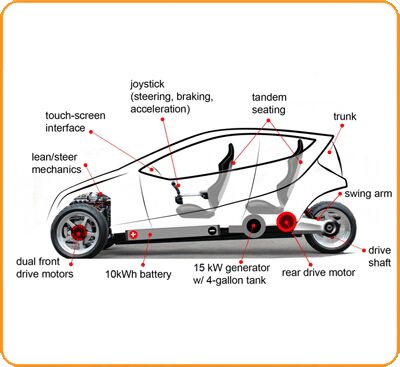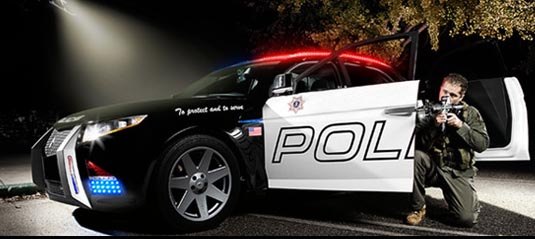#CarbonMotors
Cop Won't Drive Cop Car Part 2: So, Hoosier Daddy, Carbon Motors?
If the Carbon Motors business model was so bad, how did the company last as long as it did? To paraphrase an especially sharp-tongued commentor from one of the many Carbon E7 threads I’ve followed on the web over the years, the company’s business plan seemed to revolve around borrowing money from the government to build cars that they would then sell exclusively to the government. Only the government would be dumb enough to fall for such a scheme and the government of Indiana apparently did.
Cop Won't Drive Cop Car: Carbon Motors Declares Bankruptcy
The video above is the closest we’ll ever have to enjoying a World’s Wildest Police Chases segment featuring the Carbon Motors E7. Somewhat lost in the breaking news of March regarding the bankruptcy of Fisker Automotive and Coda was the demise of the nation’s other other startup vehicle manufacturer, the Carbon Motors Corporation. Although Bertel correctly predicted Carbon’s death shortly after they failed to qualify for a DOE loan last year, the company maintained a brave public face and soldiered on defiantly until the end of March. As late as mid March they were announcing the introduction of two new vehicles: an armored truck called the TX 7 and a skateboard shaped drone called the CT 7. Two weeks later they would be slipping out of their Indiana state taxpayer funded digs without so much as a “Dear John” letter to the desperate Hoosiers who needed the jobs they’d promised
I’d been watching and waiting for an official announcement that the company had liqudated before poking the body with a stick. That moment finally came on June 7 with a Chapter 7 filing in Indianapolis. The bankruptcy filing shows that Carbon Motors had assets of less than $19,000 and outstanding liabilities of over $21 million. It seems that the dream of a purpose-built police car is dead.
Has the Dept of Energy's Advanced Technology Vehicle Manufacturing Program Been a Failure? Not Really
Critics of the current administration have pointed to the impending bankruptcy of Fisker Automotive and the recent suspension of operations at taxi maker Vehicle Production Group as examples of why the government shouldn’t be picking winners and losers in it’s zeal to promote alternative energy. The DoE effort under which those two companies received financing is the Advanced Technology Vehicle Manufacturing Program, ATVM. Putting aside political ideologies, contrary to the image given by the apparent failure of Fisker and VPG, the ATVM program actually has a pretty decent track record when it comes to picking winners and losers.
Denied DOE Loan Makes Carbon Cop Cars DOA
When solar panel maker Solyndra went bankrupt last year, which cost the taxpayer $528 million in DOE loan guarantees, the end of the DOE loan program was quickly prognosticated. The loan program is still around, but new loans have for all intents and purposes dried up. Just a week after presumptive EV maker Bright Automotive called it quits and withdrew a DOE loan application, the program claims another victim. It is Carbon Motors, the Connersville, Ind. startup that wanted to sell fuel-efficient cop cars.
License And Registration, Please: Will You Be Pulled Over By A BMW?
As the avid reader of our cop car chronology and our on-going coverage of crime-buster conveyances knows, that market of 75,000 units a year in the U.S.A. alone is in a bit of a turmoil. The Crown Vic, holder of approximately 70 percent of the fuzz market, is about to be retired. Ford, GM, and Chrysler want to get a bite out of that crime-driven market. Not to forget a little known company, curiously and politically incorrectly named “Carbon Motors.” Since our own Sajeev Mehta directed our attention towards Carbon, it got a little quiet around the formerly Atlanta, now Connersville, Ind. based upstart that wants to build dedicated police-mobiles. Until today.

















Recent Comments